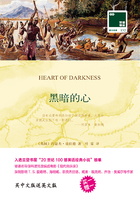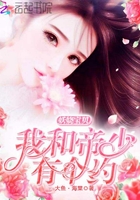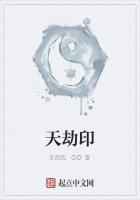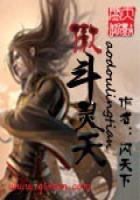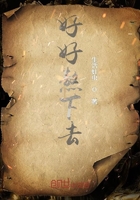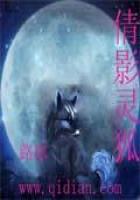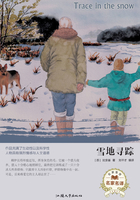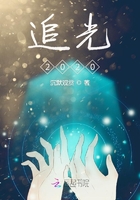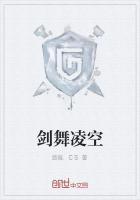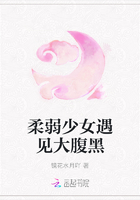海派文化
Shanghai School
The Shanghai school is a style of Chinese art present in the late 19th century and centered in Shanghai. Under the masters from this school, traditional Chinese art developed into the modern style of “Chinese painting”. Late 19th century China, or the last years of the Qing dynasty formed a tumultuous time in China's history. This period immediately followed the defeat of China in the First Opium War by the British Empire and opened several ports, such as Shanghai, to foreign trade. This period was further destabilized by the Taiping rebellions and the unequal treaties propagated by European imperialists. Shanghai, as an open city, became a sort of Asian melting pot where the various European powers could freely express their influence on the city. In turn, this influence gave rise to a new middle class which supported a new style of art known as the Shanghai school.
海派文化是中国的一种艺术形式,存在于19世纪晚期,以上海为中心。在海派大师的带领下,中国传统的艺术发展成为现代的“中国画”风格。十九世纪晚期的中国,也就是清朝晚期,中国历史出现一阵动荡。这段时期,紧接着同英国的第一次鸦片战争,中国战败,然后开放了上海等通商口岸。太平天国起义,欧洲帝国主义者强加的不平等条约,使这一时期更加动荡不安。上海是个开放的城市,当时成为了亚洲的大熔炉,欧洲各个国家都能在上海有其一席之地。反过来,这种力量使得一个新的中间阶级产生,他们正是海派文化的主力军。
The Shanghai style marked the first major departure from traditional Chinese painting by focusing less on the symbolism emphasized by the Literati style and more on the visual content of the painting itself. Members of this school were highly educated literati who had come to question their very status and the purpose of art and had anticipated the impending modernization of Chinese society. In an era of rapid social change, works from the Shanghai School were innovative and diverse and often contained thoughtful yet subtle social commentary. The most well-known figures from this school are Qi Baishi, Zhao Zhiqian, Wu Changshuo, Sha Menghai and Pan Tianshou. In literature, the term was used in the 1930s by some May Fourth Movement intellectuals - notably Zhou Zuoren and Shen Congwen - as a derogatory label for the literature produced in Shanghai at the time. They argued that Shanghai School literature was merely commercial and therefore did not advance social progress. This became known as the Jingpai versus Haipai (Beijing v. Shanghai School) debate.
海派文化中的海上画派第一次偏离了中国传统画艺。海上画派很少注重文人画体所强调的象征性,而注重画作本身的视觉内容。此流派的成员本身是文人画体出身,但却质疑其本身的地位以及艺术的主旨,并且期盼着中国社会即将到来的现代化。在社会迅速变化的时代,海派文化的作品大部分都是题材新颖、内容丰富且包含微妙的有思想的社会评论。该学派的着名人物有:齐白石、赵之谦、吴昌硕、沙孟海和潘天寿。文学作品中,这个词被20世纪30年代五四运动后的一些知识分子所使用——着名的有周作人和沈从文--当时,该词对上海文化有贬损之意。他们认为海派文化仅仅是商业化,没有促进社会进步。这就是着名的京派和海派之争。
The Shanghai School originated from the “Songjiang School”, challenged and broke the elitist tradition of Chinese art, while also paying technical homage to the ancient masters and improving on existing traditional techniques. The 'Songjiang School' (松江派), also called “Huating School”(华亭派), was a small painting school during the Ming Dynasty. It is commonly considered as a further development of the Wu or Wumen School in Suzhou, the cultural center of the region. Its main achievements were in traditional Chinese painting, calligraphy and poetry. It was especially famous for its Renwen painting (人文画). Dong Qichang was one of the masters from this school.
海上画派源于“松江画派”,挑战并打破了中国艺术的精英传统,同时对古代前辈的技艺表示尊敬,并且改善了现存的传统画技。“松江画派”又叫“华亭派”,是明朝一个小的绘画流派,通常被认为是苏州一带吴门画派的进一步发展。其主要成就是在传统的中国画、书法和诗歌,尤其在人文画方面最为着名。董其昌是该流派的大师之一。
核心词汇
1.master [?mɑ?st?]n. 大师
例:Qi Baishi is a master in painting.
齐白石是一位绘画大师。
2.tumultuous [tju?m?ltju?s] adj. 骚乱的;吵闹的
例:A tumultuous welcome from a 2,000 strong crowd greeted the champion.
多达两千之众的人们热闹欢腾地迎接冠军。
3.defeat [di?fi?t] v. 击败;战胜
例:His guerrillas defeated the colonial army in 1954.
他的游击队在1954年打败了殖民军。
4.propagate [?pr?p?ɡeit]v. 传播;传送
例:They propagated political doctrines that promised to tear apart the fabric of society.
他们宣传有可能摧毁社会结构的政治学说。
5.rebellion [ri?belj?n] n. 叛乱;谋反;不服从
例:The government soon put down the rebellion.
政府很快镇压了这次叛乱。
6.Traditional [tr??di??n?l] adj. 传统的
例:It is ideologically conservative and traditional-whereas Lincoln's Republican Party was the progressive party of its day.
意识保守和传统——然而林肯的共和党却是那个时代的进步之党。
7.symbolism [?simb?liz?m] n. 象征;象征主义;符号
例:The symbolism of every gesture will be of vital importance during the short state visit.这次短暂的国事访问中的一举一动都有极其重要的象征意义。
8.emphasize [?emf?saiz] v. 强调
例:But it's also been emphasized that no major policy changes can be expected to come out of the meeting.
但是也强调,这次会议预期不会做出重大政策改变。
9.literati [?lit??rɑ?ti?,?lit??reitai] n. 文人(literatus的复数);文学界
例:Literati paintings are executed in plain ink, often with minimal color.
文人画以普通水墨着笔,鲜用色彩。
10.anticipate[?n?tisipeit] v. 预期;期望
例 At that time we couldn't have anticipated the result of our campaigning.
当时我们不可能预期到我们活动的结果。
11.impending[im?pendi?] adj. 即将到来的
例:On the morning of the expedition, I awoke with a feeling of impending disaster.
远征出发的那天早上,我醒来就有一种大难临头的感觉。
12.innovative[?in?uveitiv] adj. 革新的;创新的
例:He was one of the most creative and innovative engineers of his generation.
他是同代人中最富有创造力和革新精神的工程师之一。
13.commentary[?k?m?nt?ri] n. 评注;注释
例:He gave the listening crowd a running commentary.
他为听众进行了实况报道。
14.notable [?n?ut?bl] adj. 值得注意的;显着的;着名的
例:The proposed new structure is notable not only for its height, but for its shape.
那座提议的新建筑由于其高度和外形而倍受关注。
15.derogatory[di?r?ɡ?t?ri] adj. 贬损的
例:He refused to withdraw derogatory remarks made about his boss.
他拒绝收回对自己老板的贬抑之言。
16.elitist [i'li:tist] n. 优秀人才;杰出人才
例:He worries about a time when college athletics becomes even more elitist than now.
他担心有一天大学体育运动会变得比现在更加精英主义化。
17.homage[?h?mid?] n. 敬意;尊敬
例:Palace has released two marvellous films that pay homage to our literary heritage.
皇城电影公司推出了两部推崇我们文学遗产的精彩影片。
18.technique [tek?ni?k] n. 技巧;技术
例:When I realized that I was writing plays, I read a lot more plays for style and for substance and for technique.
我阅读了大量剧本,学习剧本的风格,内容和技巧,这是因为我意识到我在写剧本。




